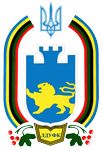Please use this identifier to cite or link to this item:
https://repository.ldufk.edu.ua/handle/34606048/32292| Title: | Special strength training using an innovative kayak ergometer during an offseason period |
| Authors: | Zanevskyy, Ihor Nowak, Stanislaw Chodinov, Volodymyr Заневський, Ігор Новак, Станіслав Ходінов, Володимир |
| Keywords: | kayak rowing ergometer training strength endurance |
| Issue Date: | 30-Apr-2022 |
| Publisher: | Journal of Physical Education and Sport |
| Citation: | Zanevskyy І. Special strength training using an innovative kayak ergometer during an offseason period / Ihor Zanevskyy, Nowak Stanislaw, Volodymyr Chodinov // Journal of Physical Education and Sport. - 2022. - Vol. 22, is. 4, аrt 122. - Р. 962-967. DOI:10.7752/jpes.2022.04122 (Scopus) |
| Series/Report no.: | наукові праці професорсько-викладацького складу ЛДУФК імені Івана Боберського в базах даних Scopus та WoS; |
| Abstract: | Kayak rowing is a sport discipline with a great importance of specific force qualities, in particular in 200 and 500 m races. Approach: Special strength training at high velocities should be preferred to resistance training at low velocities to train more specifically during the offseason. Purpose: The aim of this research is to study the influence of a special strength training using an innovative kayak ergometer during an offseason period on the sport competition results in water rowing in 200 and 500 m races. Material: Sixteen 15–18-year-old male kayak rowers were involved in this research (body mass: 75.9 ± 4.3 kg, body length: 175.7 ±3.0 cm). All participants were healthy and trained according to the program of kayak rowing for sport schools. Results: A decrease in time in the 200 m competition race in the experimental group (1.6 s) was 0.7 s greater compared to the control group (0.9 s). Similar results were observed in the competition results in the 500 m race with 1.7 s difference between the experimental and control groups’ competition results (p < 0.001). Very strong Pearson correlation was observed between competition results in 200 and 500 m races: r = 0.959 in November and r = 0.949 in March (p < 0.001). According to the results of two-way ANOVA, a strongly significant bias appeared between competition results in 200 m distance (p = 0.021) and 500 m distance (p < 0.001). Corresponding quarter of variance equals 17.2% and 40.8%, respectively. These parameters confirm a significant decrease in time of overcoming the two studied distances in March compared to November competitions. Conclusions: A special strength training using an innovative kayak ergometer during an offseason period (November–March) resulted in a strongly significant (p < 0.001) increase in the sport competition results in water rowing in 200 m (0.7 s) and 500 m (1.7 s) distances. |
| URI: | http://repository.ldufk.edu.ua/handle/34606048/32292 |
| ISSN: | online ISSN: 2247 - 806X; p-ISSN: 2247 – 8051; ISSN - L = 2247 - 8051 |
| Appears in Collections: | Наукові праці професорсько-викладацького складу ЛДУФК в базах даних Scopus, WoS, Tomson Reuters |
Files in This Item:
| File | Description | Size | Format | |
|---|---|---|---|---|
| Zanevskyy_Novak_Art 122.pdf | 241.37 kB | Adobe PDF | View/Open |
Items in DSpace are protected by copyright, with all rights reserved, unless otherwise indicated.
